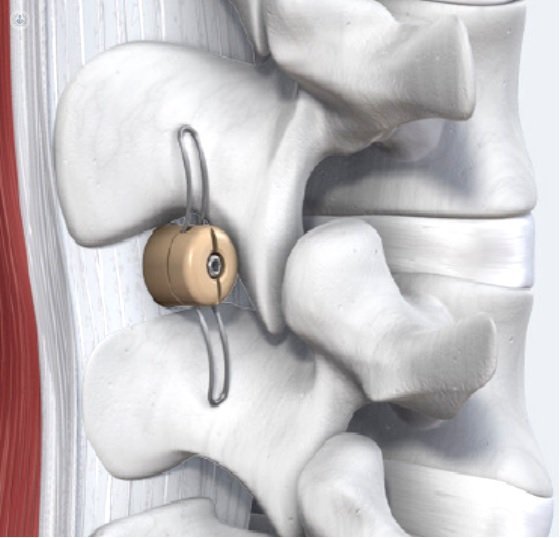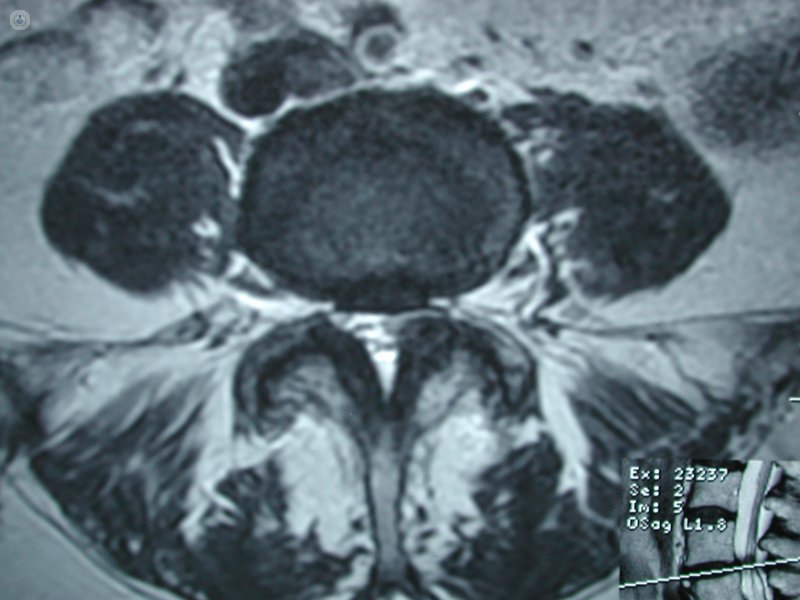How should you treat lumbar stenosis?
Written by:Lumbar spinal stenosis, also known as the window syndrome, can be treated by microsurgery or by percutaneous surgery. Both have a high success rate.
 Lumbar stenosis is decreasing diameters lumbar canal where are the final part of the spinal cord and nerve roots of the cauda equina, both responsible for the movement in the legs and bowel control.
Lumbar stenosis is decreasing diameters lumbar canal where are the final part of the spinal cord and nerve roots of the cauda equina, both responsible for the movement in the legs and bowel control.
As claim the neurosurgeons , lumbar canal measures may be congenitally handicapped or, more often, by a process called degenerative spondylosis.
95% of men and 80% of women over 65 have stenosis clinically or radiologically channel.
SYMPTOMS
Low back pain is the main symptom of lumbar stenosis. The sensory disturbances in the form of tingling in the legs and loss of strength are other symptoms of this disease. This causes loss of strength, walking a few meters, the person will have to stop and sometimes flexing the trunk over the pelvis to the symptoms disappear.
Lumbar stenosis is also known as syndrome showcase precisely for this reason, because the person who suffers this condition stops to look in the windows when you are walking down the street and thus concealed until the pain disappears. Showcase syndrome is caused by a nerve claudication. But it can also have a vascular origin, that is, the obstruction of the iliac and femoral arteries by plaques or internal injuries of the vessels.
The difference between neurogenic claudication origin stenosis and vascular origin is that the first, along with leg pain, loss of strength may occur but sufferers retain the arterial pulse in the legs; which it does not occur in the vascular claudication.
Treatment of lumbar stenosis
Lumbar spinal stenosis may be treated surgically percutaneously, ie without surgical incisions. It also uses minimally invasive interventions such treatment.
Microsurgical interventions are performed with surgical microscope and consist of small incisions in the skin and then small decompression that are releasing nerve or nerves that hurt enlarging the hole through which they pass.
This is called foraminotomías and accompanied by the removal of the ligamentum flavum which is in the midline between each two vertebrae, thus selective decompression is performed. The last part of the procedure involves the placement of an interspinous device between vertebra to maintain the decompression performed and the channel is not closed.
In other cases, when the patient has other diseases such as diabetes, hypertension or been transplanted kidney or liver, especially if the key is neurogenic claudication syndrome, it is advisable to perform the treatment by percutaneous surgery. Percutaneous surgery involves placing a percutaneous interspinous device.
In both treatments, surgery is approximately less than 30 minutes, the patient may be discharged at 24 to 48 hours. Both interventions are successful between 80 and 97%. None of the interventions is a surgical risk.
Note that the half-life in Spain is the highest in the world, both men and women and, therefore, to have a good quality of life is essential when people grow older. It is logical that human beings want to live increasingly longer, but must do so in the best possible conditions.



